For visitors to my website, my “Build of the Month” (BOTM) Series was created to help those who are trying to get started in building their own Radio Controlled (RC) Model Aircraft.
"Aerofred.com" and "Outerzone.co.uk" are two of my favorite web sites to obtain free RC model airplane plans for my new builds. Additionally, they like to post images of Builder's models, and both sites have posted my RC model images and build descriptions under the heading of the associated aircraft model. Other good sources for free plans are: "Hip Pocket Aeronautics Builders' Plan Gallery", "Vintage & Old-Timer RCM Free Plans", "James Hatton Blog Free Plans and Articles", "Hlsat Blog RCModeler Free Plans and Articles", and "Don Dewey Memorial RCM Plans Collection."
If you are currently not an active builder, and you would like to be, my BOTM Series is a great place to start. If you have an RC model aircraft that you would like to see featured in this section or feel others may find interesting, please let me know and I will make every attempt to find scratch build plans, photos, and maybe even a published build article, which I will then post in a future BOTM edition. Just send me an email @: Build of the Month.
Click on any link below to jump to that BOTM Edition
December 2023 — RCM New Era III
November 2023 — RCM Big Bird and Big Bird 2
October 2023 — Douglas XTB2D-1 Skypirate
September 2023 — Ben Buckle Diamond Demon
August 2023 — Clancy Speedy Bee
NOTE - You can view all images in a “Spotlight Box” by simply clicking on any image.
Build of the Month Series - December 2023 Edition
I hope you enjoyed last months BOTM edition on the RCM Big Bird and Big Bird 2. If you have an RC model that you would like to see featured in this section or feel others may find interesting, please let me know and I will make every attempt to find scratch build plans, photos, and maybe even a published build article, which will then post in a future edition. Just send me an email @: Build of the Month.
Ok, now lets see what I have for the month of December 2023. Lets try our hand at something that will build quickly, flies great, and won't break the bank. I also want to introduce a class of model that I have yet to cover in the BOTM Series, a low-wing sport-pattern airplane. This is not a beginner pilot's aircraft. Although a novice or higher might enjoy flying this aircraft at slow speeds, it can be very fast requiring the techniques of a more advanced pilot. So given these requirements, this month features the RCM New Era III designed by Don Dewey and updated by Joe Beshar.
Images Source: Outerzone RCM New Era III Webpage.
The RCM New Era III is a sporty, 45″ wingspan, small sport-pattern plane, originally designed by Chuck Cunningham and Don Dewey in 1969, but another version, the "New Era III Revisited", was modified and updated by Don Dewey and published in RCM Magazine in 1996.
- Model Specifications:
- Wingspan: 44.6″
- Wing Chord: 9 1/8″
- Total Wing Area: 400 square inches
- Fuselage Length: 39″
- Landing Gear: Tricycle
- Number of Channels: 4 - ailerons, elevator, rudder and throttle
- Weight: approx. 48-56 ounces depending on power system used
- Glow Fuel Engines: 0.19 to 0.25 cubic inch 2-stroke or similar
- Electric Powered: Output of 400 to 500 Watts, 60 amp ESC, 3-cell 45C LiPo pack of around 3300-4000 mah.
This model features built up construction using a well established method of balsa and ply construction that results in a light yet strong and rigid structure needed for a pattern model. The full symmetrical airfoil wing provides a high lift coefficient and excellent handling characteristics needed for a sport-pattern plane. One item I found very helpful in building full symmetrical wings is a simple wing jig. The jig holds the wing ribs above the plans and ensures all are properly aligned while the remaining wing structure is assembled. Provided in the link section below is an article from RCM so you too can make this very simple wing jig, and is pictured below when used to build a Bokkie model, a similar sport-pattern design. This RCM New Era III model grooves -- it goes exactly where you point it, and will do each and every maneuver that you call upon it to perform from sustained knife edge flight to vertical maneuvers of any type. Yet, you can slow it down, and drag it in nose high at a landing rate so slow that you will find it almost impossible to believe that it is still airborne.
Here is a link to an excellent build series video: “RCM New Era III Revisited - Build Series - Balsa RC Planes. By Mark Robinson.” This is a 19-part build series that will take you step-by-step through the construction of the New Era III model, culminating in a maiden flight, and to be followed by a build and flight review. The finished model is powered by an English made Irvine .25 Mk III, an excellent 2-stroke nitro engine. The build is a 4-channel RC, ailerons, elevator, rudder and throttle. A very well done video series. The model in the video is built from a great set of plans from RCM, and three articles which are all available from: “Outerzone.”
Outerzone New Era III Webpage.
RCM Wing Jig Article.
I hope you have enjoyed this months selection, and just maybe, I have spurred some interest in trying your hand at building a Sport-Pattern RC model airplane.
Until next month - Keep the Balsa Dust Flying!!
Build of the Month Series - November 2023 Edition
I hope you enjoyed last months BOTM edition on the Douglas XTB2D-1 Skypirate. If you have an RC model that you would like to see featured in a future BOTM edition or feel others may find interesting, please let me know and I will make every attempt to find scratch build plans, photos, and maybe even a published build article, which will then post in a future edition. Just send me an email @: Build of the Month.
Ok, now lets see what I have for the month of November 2023. I received an request to feature a model that could initially be built as a basic high-wing trainer, and then after having mastered flying that version, could then be easily converted to a low-wing sport plane. So I set off on my search for such a model. After an extensive search I was unable to find an RC model that could meet the request. If anyone knows of such a plane, please let me know so it can be featured it in a future BOTM edition. But I was able to find an RC model that can be built either as a high-wing or a low-wing trainer. This edition will be the first “dual build option trainer” featured in the BOTM Series, and a plane that many of you may have seen or even built yourself. So given the search results, this month features the RCM Big Bird and Big Bird 2.
Images Source: Outerzone Big Bird 2 Webpage.
The original Big Bird happens to be a powered aircraft that could be recommended as a first RC model project, particularly for a person who either does not have, or does not want an experienced RC'er to assist them. We are all aware of modelers who will assemble their first model and then go out alone to make their very first RC flight. The probability of success on this first unaided attempt is very low with the majority of the “trainer” type RC models. The Big Bird approach is to combine low weight with generous wing area and a small throttle equipped engine to obtain a forgiving, slow flying model. This allows the new pilot ample time to correct their mistakes before the model smashes into the ground. In fact, with the Big Bird at a reasonable altitude, if the new pilot has managed to get their model into a awkward situation, they merely have to throttle back the engine, return controls to neutral, and the Big Bird will right itself.
- Model Specifications:
- Wingspan: 84″
- Wing Chord: 11.5″
- Wing Area: 900 sq. inches
- Fuselage Length: 52.25″
- Weight: approx. 56 oz. depending on power system used
- Number of Channels: 3 and up to 5 depending on the flight controls used in your build
- Glow Fuel Engines: 0.10 or up to 0.25 2-stroke
- Electric Powered: Output of 200 - 500 Watts, 33 - 60 amp ESC, 3-cell LiPo pack of around 1,500 - 4,000 mah.
The construction of either Big Bird is very straightforward. A basic LONG box fuselage, stick build tail surfaces, and a BIG flat bottom wing. As indicated earlier, this would be a great plane for the first-time scratch builder to build and fly. The original Big Bird is very similar to the Dynaflight Butterfly kit. I modified the Big Bird 2 plans to use “bolt-on” wings, added ailerons to each of the outer wing panels and flaps to each of the inner wing panels, increased the rudder and elevator by approximately 30%, extended each of the inner wing panels to 23″ which yields an overall wingspan of 94″, and removed the dihedral at the wing center section joint. An O.S. .26 Surpass 4-stroke was initially used for power, but later changed to an O.S. .25 FX 2-stroke. I used five channels in thus plane, but that is not to say fewer could be used if you did not want the ailerons and/or flaps, or more can be used if you want to drive each flap and aileron surface servo using a separate channel on the receiver. Your call on this one.
The RCM Big Bird and Big Bird 2 can be built from plans and articles, which are available from: “Outerzone.”
Outerzone RCM Big Bird Webpage.
Outerzone Big Bird 2 Webpage.
My Big Bird 2 Build Description.
I hope you have enjoyed this months selection and maybe generated some interest in trying your hand at building a dual build option trainer RC model airplane.
Until next month - Keep the Balsa Dust Flying!!
Build of the Month Series - October 2023 Edition
I hope you enjoyed last months BOTM edition on the Diamond Demon. If you have an RC model that you would like to see featured in a future BOTM edition or feel others may find interesting, please let me know and I will make every attempt to find scratch build plans, photos, and maybe even a published build article, which will then post in a future edition. Just send me an email @: Build of the Month.
Ok, now lets see what I have for the month of October 2023. Given that the last two BOTM editions contained RC models that were simple to build and would be very easy to fly, in this edition I am going to feature something different. This RC model will require not only a high level of scratch builders experience, but also an RC pilot with considerable flying time under their belt and possess moderate to advance flying skills. This edition will be the first “warbird” featured in the BOTM Series, and a plane that many of you have never seen or even knew existed. So given these requirements, this month features the Douglas XTB2D-1 Skypirate.
Images Source: Outerzone Douglas XTB2D-1 Skypirate Webpage.
The full size Douglas XTB2D-1 Skypirate was an exceptionally large 70-foot span, 3 seat shipboard torpedo bomber. In November 1942, the United States Navy commissioned the Douglas Aircraft Company to design, develop and produce their new bomber. The project gained the necessary impetus to move forward in late October 1943, when the contracts for two airworthy prototypes (the second fuselage slightly lengthened) and a "Skypirate" named "XTB2D-1" were signed. When Douglas engineers (a team including the famous American aeronautical engineer Ed Heinemann) got to work, the twin-engine approach was eventually abandoned in favor of a single-engine approach with considerable power. This became the Pratt and Whitney XR-4360-8 3,000 hp supercharged radial piston engine driving a pair of 14.3-foot diameter four-blade counter-rotating propeller units. Internal bomb bays were also part of the original design plan, while aft turrets would be used to defend against trailing air threats. A fairly modern tricycle landing gear was installed to provide the necessary clearance for the large blades, while also simplifying the loading/reloading of ammunition. Each wing contains two hardpoints for carrying a 2,100-pound torpedo load (or equivalent for traditional thrown weapons). Further exploration was made of outboard mount points for disposable fuel tanks that could be used to increase the combat range. Each wing was also equipped with 2 each .50 caliber Browning M2 heavy machine guns for forward firing at ground targets. Firestone provided work for the back turret, which was armed with 2 each .50 caliber M2 Browning heavy machine guns. The turret was mounted in the center of the aircraft, with the cockpit in the front. The ventral structural fairing was planned below, and that station would feature a viewing window, as well as 2 more .50 caliber Browning M2 remote-controlled heavy machine guns. Lots of firepower on this aircraft. This torpedo bomber was intended for service on Midway and Essex class aircraft carriers as it was too large for the decks of earlier carriers. Two prototypes were completed but by the time it was ready the dedicated torpedo bomber was becoming an outdated concept and with the end of WW-II the "Skypirate" was deemed unnecessary and was canceled.
- Model Specifications:
- Wingspan: 84″
- Wing Area: 864 sq. inches
- Fuselage Length: 55″
- Weight: approx. 11 lbs. depending on power system
- Glow engines: 0.74 to 0.90 2-stroke
- Electric: Output of 1,500 to 1,800 watts, 80-100 amp ESC, 6-cell LiPo pack of around 5,000 mah.
If the plans you acquire are for the late 1960s-era design by Claude McCullough, you have all the ingredients for a unique and good-flying RC model! His design was a successful competition scale model, but more so, consider the attributes of its 1:1 scale big brother:
- A polyhedral wing provides a lot of stability on the roll axis.
- Plenty of wing area, with a relatively high aspect-ratio for this type of aircraft.
- GIGANTIC aft dorsal side area offers more yaw stability than one might ever need.
- Long nose moment offers great pitch stability, plus a lighter model (little or no lead will be needed if tail is built reasonably light; and the nose gear installation up front --ahead of the C/G-- [and no tail wheel aft] will only help this effort.)
- Tricycle landing gear (with dual NLG wheels) makes taxiing, take-offs, and landings easier.
- Generous horizontal stabilizer area.
- An inherently stable weapons-delivery platform; thus, a VERY STABLE flyer.
- A nice big radial cowl up front offers plenty of room for an enclosed engine that can be effectively cooled as well.
- Those monster counter-rotating props will sure make a SEXY static-display model prop extravaganza for all to enjoy out on the flying field! ;-)
All these things combine to make this almost glider-like airplane a perfect 5-6 channel RC scale model, provided you want an airplane that is not wildly "light on its feet" as an aerobatic machine. I think this aircraft is in the MAJESTIC category, and it sure is a seldom-seen beauty.
The Douglas XTB2D-1 Skypirate can be built from plans and article which are available from: “Outerzone.”
Outerzone Douglas XTB2D-1 Skypirate Webpage.
I hope you have enjoyed this months selection and maybe generated some interest in trying your hand at building an unusual warbird RC model airplane.
Until next month - Keep the Balsa Dust Flying!!
Build of the Month Series - September 2023 Edition
I hope you enjoyed the first edition of my BOTM Series on the Clancy Aviation Speedy Bee. If you have an RC model that you would like to see featured in this section or feel others may find interesting, please let me know and I will make every attempt to find scratch build plans, photos, and maybe even a published build article, which will then post in a future edition. Just send me an email @: Build of the Month.
Ok, now lets see what I have for the month of September 2023. How about a "Old Timer" RC model. Again, this should be a model that is simple to build and will be very easy to fly. This model should also bring back the early era of when RC flying was more by the "seat of your pants" versus the computer controlled capabilities we all have available to us today. So given these requirements, this month features the Diamond Demon from Ben Buckle.
Images Souce: Outerzone Diamond Demon Webpage.
The Diamond Demon is a lovely, 49″ wingspan, vintage plane from the late 1930's, designed by Jerry Stoloff, which was first kitted out in 1939 by the Bay Ridge Model Airplane and Supplies Co.
- Model Specifications:
- Wingspan: 49″
- Wing Chord: 7″
- Fuselage Length: 32.5″
- Weight: approx. 25 oz. depending on power system
- Glow engines: 0.75 to 1.5 cc or similar
- Electric: Output of 200 to 300 watts, 30-40 amp ESC, 3-cell LiPo pack of around 1500-2200 mah.
Typical of the era, this model features built up construction using the well established by then, method of balsa and doped tissue construction which gave a light yet rigid structure considered essential at that time. A generous under camber wing provides a high lift coefficient and a slow flying model which was not so important then, as everything went away down wind at the same speed. Style was becoming a consideration and while today's eye would consider it a caricature of a light aircraft, that deep fuselage had its counterparts in full size aviation at that time.
The Diamond Demon can be flown either RC or free flight (F/F), and is one of Ben Buckle Vintage Kits best selling smaller kits and a really great flyer. It makes an ideal 'lob and chase' model that climbs gently away then settles into a nice turn so (hopefully) will not fly away and is an ideal introduction F/F if you have not tried it before. Their Diamond Demon kit contains pre-cut wing ribs, tip shapes, plywood formers, strip and sheet balsa, full size plans, undercarriage wire, glazing material, and a simple hardware package. Everything needed to build the basic airframe of the model. Recommended engine size of 0.75 to 1.5 cc or similar.
Here is a link to an excellent build series video: “Diamond Demon - Build Series - Balsa RC Planes. By Mark Robinson”. This is a build series that will take you step-by-step through the construction of the model, culminating in a maiden flight, and to be followed by a build and flight review. The finished model is powered by a 1940's Bantam 19 (Bantam 19 Spark I), an excellent spark ignition engine. The build is a 2-channel RC, elevator and rudder. A very well done video series. The model in the video is built from a great set of plans from Ben Buckle Vintage Kits, UK, using the link provided below. The Diamond Demon can also be built from other plans and articles which are all available from: “Outerzone.”
Outerzone Diamond Demon Webpage.
Please check out this link to "Ben Buckle Vintage Kits" for Diamond Demon plans, kits, and other items.
How about a Double Diamond, which is twice the size of the Diamond Demon free flight model. It has a light structure and low frontal area as well as plenty of wing area making it a very graceful model that can be flown on minimal power. The distinctive deep fuselage makes it very vintage looking as well as adding to its stability in the air. The Ben Buckle kit features pre-cut balsa and plywood wing ribs, tip shapes, formers, sheet and strip wood, hardware pack and full-size plans. Everything you will need for the basic airframe of this model. The Double Diamond has a large wingspan of 96″, will handle glow engines .45 - .65 2-stroke or .45 - .60 4-stroke, and can be controlled using a simple 3-channel RC system. Click the following link to see the Double Diamond fly Video. The model in the video was built using a brushless 4250-650 motor, 14x7 prop, 85A SBEC, and two 3,000mAh, 3S, 11.1v LiPo. And here is a nice Diamond Demon flight video: Big Red.
I hope you have enjoyed this months selection, and just maybe, I spurred some interest in trying your hand at building a Vintage RC model airplane.
Until next month - Keep the Balsa Dust Flying!!
Build of the Month Series First Edition - August 2023
I thought I would start my BOTM Series out with a model that is simple to build, fairly easy to fly, and a very unique design. Many RC model builders will recognize the name “Clancy.” So, this month features the Speedy Bee from Clancy Aviation.
Images Souce: Outerzone Speedy Bee Webpage.
The Speedy Bee is a fun 40″ wingspan four channel mid-winged sport plane, which is still very much a Bee. You know: Oversized control surfaces, hands-off stability, very low minimum flying speed, easy aerobatics. The Speedy Bee is just a Bee that's a little speedier. It can handle having more power than a Lazy Bee. It's also a speedier building job. No lamination required! :-)
- Model Specifications:
- Wingspan: 40″
- Wing Chord: 14″
- Fuselage Length: 32″
- Weight: 30 oz to 42 oz.
- Glow engines: from .10 2-stroke up to .30 4-stroke
- Electric: Output of about 250 to 600 watts, 4-cell LiPo pack of around 2200 mah.
The Speedy Bee can use glow engines from .10 2-stroke up to .30 4-stroke. It's light enough to fly with glow engines as small as the Cox .09. It will climb at an angle of about 75 to 80 degrees on a sport .15 and have a take-off roll measured in inches rather than feet. With larger engines it will probably have vertical.
An electric-powered Speedy Bee typically will have a total flying weight of around 30 to 35 ounces ready to fly. It's recommended you use motors with a power output of about 250 to 600 watts. The electric Speedy Bee tends to be tail heavy with brushless motors. You might want to use an oversize motor to help balance the plane even though you don't need the extra power. Larger motors can be de-tuned by throttling them down, or by using a smaller prop than specified for the motor, or by not using the maximum number of cells. The best battery size to use is a 4-cell LiPo pack of around 2,200 mah.
Speedy Bees work great with #9 Trexler Wheels--the same as those for the Lazy Bee, and they can be purchased thru the “Andy Clancy Designs” link provided below. You can also use the same Lazy Bee floats for fun on the water or snow.
Here is a link to an excellent 21-part build series video: “Speedy Bee - Build Series - Balsa RC Planes. by Mark Robinson.” This build series will take you step-by-step through the construction of the Speedy Bee model, culminating in the maiden flight, and a build and flight review. A very well done video series. The model is build from a great set of plans, instructions, manual, article and review, which are all available @: “Outerzone.”
Outerzone Speedy Bee Webpage.
RC-Plans.com Speedy Bee Plans, Build Article, and Videos.
A YouTube Speedy Bee Maiden Flight Video.
My Speedy Bee Build Description.
Also check out this link to "Andy Clancy Designs"
I hope you have enjoyed this months selection, and just maybe, spurred some interest in trying your hand at scratch building an RC model airplane.
Until next month - Keep the Balsa Dust Flying!!


.jpg)
.jpg)
.jpg)
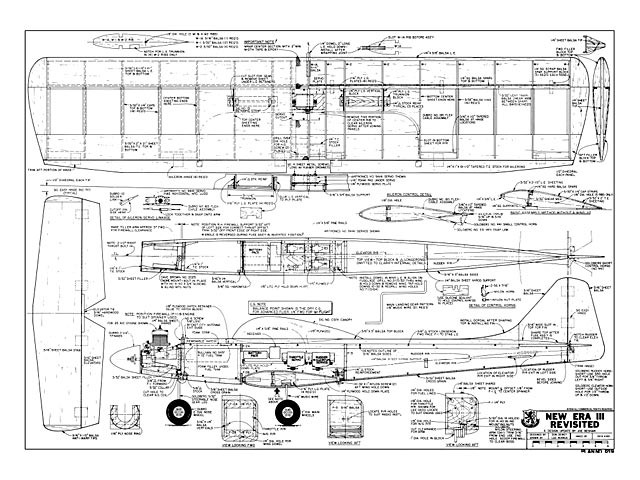

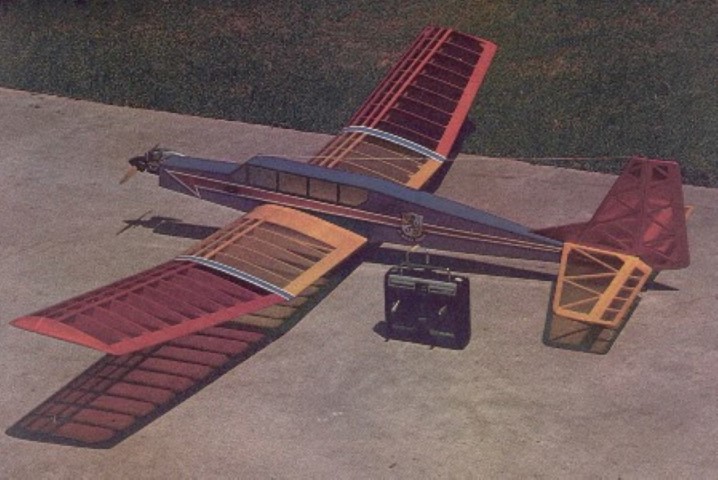

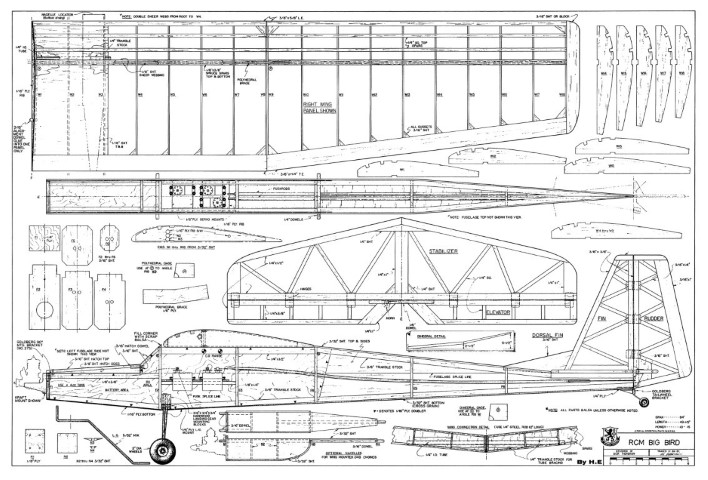
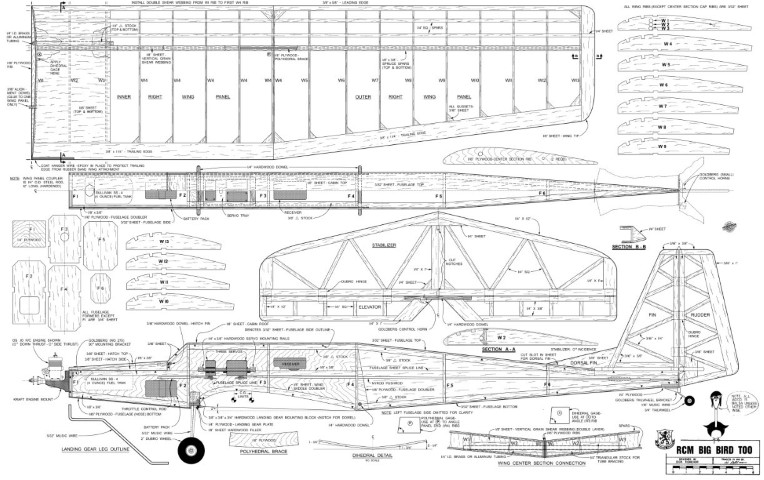

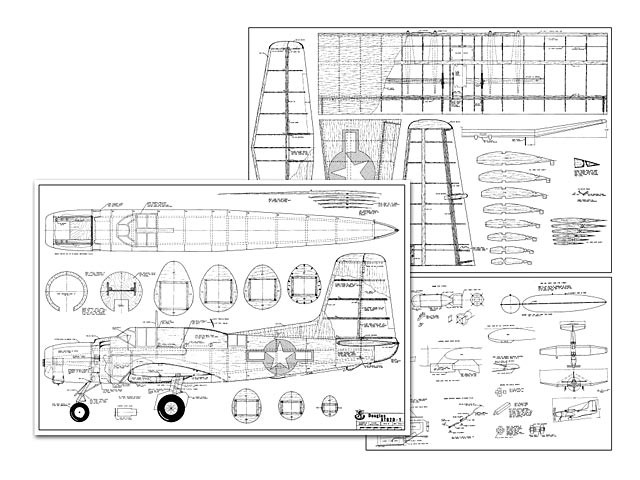
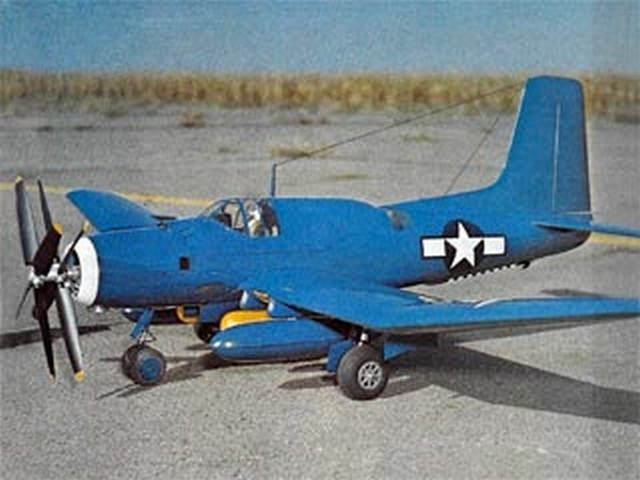


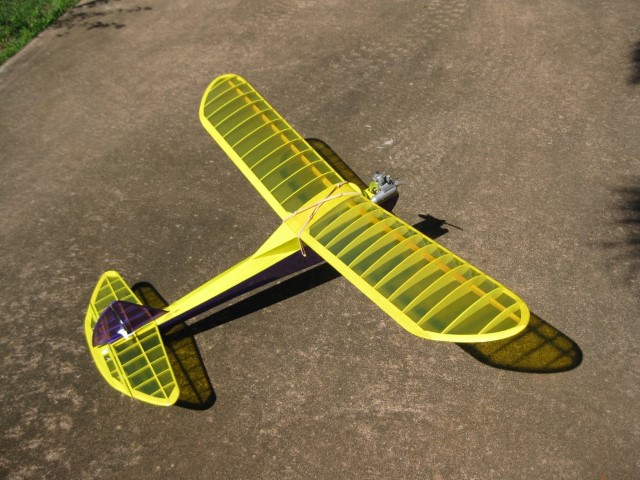
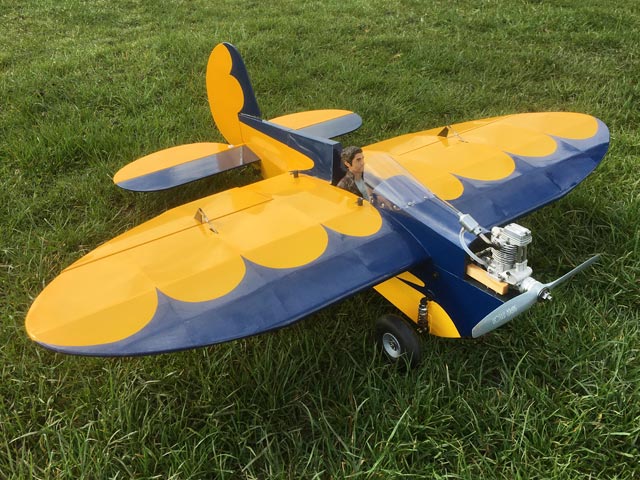


 All HTML & CSS Coded by Larry
All HTML & CSS Coded by Larry